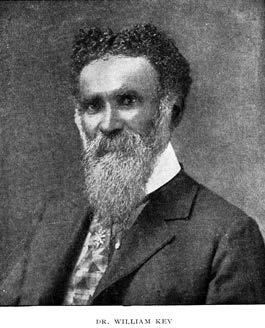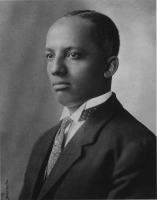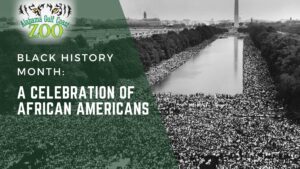In the month of February, we celebrate African Americans and their contribution to our American history. Mondays in February, the Alabama Gulf Coast Zoo will feature African American pioneers in Veterinary Medicine, Veterinary Sciences, and agriculture by featuring pictures and facts of different scientists. Being that African American men and women only make up less than 3% of the total veterinary population, the world is now striving for racial diversity in this field.

William Key “Beautiful Jim Key” (1833-1909)
William Key, a nineteenth-century veterinarian and horse trainer, was born into slavery in Winchester took the name of his owner, William Key, a Shelbyville planter and entrepreneur.
As a child, he demonstrated a remarkable talent for working with horses and mules. Key read veterinary texts and experimented with animal remedies until he became a successful veterinarian and equine dentist. When Key’s owner passed, he took on the responsibility of making a name for himself and buying his freedom. He organized a traveling minstrel and medicine show, at which his animals performed skits to demonstrate the apparent effectiveness of his medications.
While in Mississippi, Key bred an Arabian Bay and Standardbred stallion known as
“Jim.” Key put Jim on a rigorous training routine that lasted for seven years. When finally
exhibited, Jim could spell, distinguish among coins and make change, write letters and his name
on a blackboard, identify playing cards, play a hand-organ, and respond to political inquiries,
among other amazing feats. Key first exhibited “Beautiful Jim Key” at the 1897 Tennessee
Centennial exhibition in Nashville. Albert R. Rogers, a wealthy officer of the American Humane
Association witnessed the performance and was especially gratified that Key’s training methods
consisted entirely of positive rewards for performance. Rogers negotiated the right to exhibit the
horse nationally and advanced Key a large sum of money.
For nine years, Key, Rogers, and “Beautiful Jim” toured major cities east of the Rocky
Mountains. Hundreds of thousands of children received “Jim Key Band of Mercy” cards by
pledging to be kind to animals, and local humane societies received sizable shares of admission
sales. In 1906, after appearing before almost two million spectators, Key and Beautiful Jim
retired to Shelbyville, where Key lived comfortably until his death in 1909.
http://tennesseeencyclopedia.net/entries/william-key/

Carter G. Woodson (1875-1950) “The Man Behind Black History Month” Carter G. Woodson was an African-American writer and historian known as the ‘Father of Black History’. After the Thirteenth Amendment abolished slavery in the United States in 1865, he founded the Association for the Study of Negro Life and History (ASNLH), an organization dedicated to researching and promoting achievements by Black Americans and other people of African descent. Woodson’s dedication to celebrating the historic contributions of African Americans led to the establishment of Black History Month, marked every February since 1976. https://www.history.com/topics/black-history/black-history-month
https://www.biography.com/scholar/carter-g-woodson
Blog content by Tatyana Fields, Guest Engagement Keeper Graduate of Tuskegee University, B.S. degree in Animal, Veterinary, and Wildlife Sciences.




































Get Social With Us
Read Our Recent Reviews: